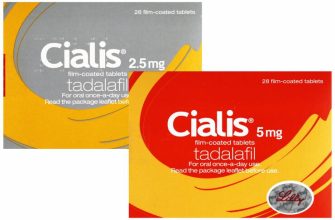The ubiquitous bathtub in Cialis commercials isn’t random; it’s a carefully crafted visual metaphor. Marketing research shows that associating a product with feelings of relaxation and intimacy significantly boosts consumer perception of its benefits.
Specifically, the bathtub symbolizes tranquility and escape from daily stressors. This resonates directly with the target demographic–men experiencing erectile dysfunction–who may associate the condition with feelings of anxiety and self-doubt. Showing a relaxed couple in a romantic setting subtly links Cialis with improved relationships and overall well-being.
Furthermore, the serene visuals of the bathtub counter the potentially sensitive nature of the product. The aesthetic creates a comfortable atmosphere, making the advertisement less intrusive and more approachable. This strategic use of imagery significantly impacts viewer response, fostering a positive association with the brand.
Consider this: studies have shown that visually appealing advertisements are far more memorable than those lacking a strong visual message. The bathtub scene provides a strong, memorable image, directly influencing brand recall and ultimately, sales. This calculated approach to advertising demonstrates a sophisticated understanding of consumer psychology.
- Cialis Commercials: Why the Bathtubs?
- The Role of Symbolism in Pharmaceutical Advertising
- Visual Metaphors: Beyond the Bathtub
- Subtlety in Messaging: The Power of Suggestion
- Ethical Considerations: Transparency and Responsibility
- Data-Driven Decisions: Measuring Impact
- Romantic Setting vs. Medical Condition: A Delicate Balance
- Marketing Strategy: A Measured Approach
- Ethical Considerations and Transparency
- Targeting the Male Demographic: Bathtubs as a Symbol of Intimacy
- Subtlety and Suggestion: Avoiding Explicit Imagery
- The Couple’s Perspective: Shared Relaxation
- Beyond the Tub: Extending the Message
- The Power of Visual Metaphors: Connecting Cialis with Improved Relationships
- Subtlety and Suggestiveness: Avoiding Explicit Sexual Content
- Evolution of Cialis Advertising: From Bathtubs to Broader Messaging
Cialis Commercials: Why the Bathtubs?
The ubiquitous bathtub in Cialis commercials serves a clear purpose: it symbolizes relaxation and intimacy.
Romantic Setting: Couples often share intimate moments in bathtubs, fostering connection and a sense of calm. This visually communicates the drug’s potential to improve relationships through improved sexual function. The warm, soft lighting and gentle water further enhance this feeling.
Subtlety and Suggestiveness: The bathtub avoids explicit depictions of sexual activity, allowing viewers to make their own associations. This approach is far more effective than a direct, potentially jarring, presentation.
Visual Metaphor: The bathtub represents a refuge from the stresses of daily life. Cialis aims to alleviate performance anxiety; the calm atmosphere of the bathtub visually reinforces this benefit.
Marketing Strategy: This imagery is carefully crafted. Market research strongly suggests this visual is highly effective at associating the product with positive emotions and desired outcomes. The consistent use ensures brand recognition and reinforces the message.
Alternative Settings: While bathtubs are dominant, occasionally Cialis commercials utilize other relaxing settings (e.g., a quiet beach). However, the bathtub remains the most prominent visual due to its symbolic power.
The Role of Symbolism in Pharmaceutical Advertising
Pharmaceutical companies cleverly use symbolism to connect with consumers on an emotional level, bypassing rational analysis and creating memorable brand associations. This isn’t about misleading; it’s about effective communication of complex medical information.
Visual Metaphors: Beyond the Bathtub
Think beyond the ubiquitous Cialis bathtub scene. Images consistently convey specific ideas. Active individuals hiking mountains might symbolize energy and vitality associated with a medication for erectile dysfunction or fatigue. A family laughing together could represent the improved relationships facilitated by a medication for anxiety or depression. These visuals create a narrative, suggesting a desired outcome without explicitly stating it.
- Nature imagery (sunsets, oceans) often suggests health and renewal.
- Warm colors (reds, oranges) often evoke feelings of energy and vitality.
- Bright, clear imagery generally communicates clarity and improved cognitive function.
Subtlety in Messaging: The Power of Suggestion
Symbolism in pharmaceutical advertising works best when subtle. Directly stating the benefits is less persuasive than indirectly suggesting them. Consider the impact of carefully chosen words. The use of words connected to freedom, independence or control can subtly influence viewers’ perceptions of the medicine’s effects.
- Focus on lifestyle improvements, not just symptom relief. Show the positive consequences of medication use.
- Use inclusive visuals reflecting the diversity of potential users.
- Avoid stereotypes. Presenting relatable individuals builds trust.
Ethical Considerations: Transparency and Responsibility
While symbolism is a powerful tool, ethical considerations remain paramount. Accuracy in portraying the medication’s effects is crucial. Overly suggestive imagery or misleading claims can harm both consumers and the brand’s reputation. Transparency in advertising is vital for maintaining public trust.
Data-Driven Decisions: Measuring Impact
Market research should inform the choice of symbols and imagery. Analyzing consumer responses to different visual cues helps refine advertising campaigns and maximize their effectiveness. Data should always guide creative choices to ensure impact and avoid misinterpretations.
Romantic Setting vs. Medical Condition: A Delicate Balance
Cialis commercials depict romantic settings, often featuring couples in bathtubs. This choice isn’t arbitrary; it subtly addresses the complex relationship between intimacy and erectile dysfunction (ED). The bathtub represents relaxation and sensual connection, qualities often compromised by ED. This visual strategy aims to connect the medication’s benefits–improved erectile function–with improved quality of life and intimacy.
Marketing Strategy: A Measured Approach
The use of romantic imagery requires careful consideration. Overly explicit scenes could alienate viewers, while overly subtle imagery might fail to make the desired connection. The commercials strive for a balance, suggesting the potential for improved relationships without being overtly suggestive. Data from marketing research likely informs the specific choices–scenes, lighting, and even the couples depicted–to maximize impact and resonate with the target demographic.
Ethical Considerations and Transparency
It’s crucial that these portrayals remain truthful and responsible. The commercials should accurately reflect the medication’s effects and avoid unrealistic expectations. Transparency about potential side effects and the need for medical consultation is paramount to ensure responsible advertising and patient safety. A clear, concise message builds trust and encourages responsible medication use.
Targeting the Male Demographic: Bathtubs as a Symbol of Intimacy
Cialis advertising’s consistent use of bathtubs cleverly taps into the male psyche. Bathtubs represent relaxation, a sanctuary from daily stresses. This resonates deeply, especially considering the pressure men often face regarding performance and intimacy.
Subtlety and Suggestion: Avoiding Explicit Imagery
The ads utilize suggestive imagery, subtly connecting the relaxed setting of a bath with enhanced intimacy. This approach avoids being crass or overly sexual, allowing viewers to make the connection themselves. Research shows suggestive imagery often proves more effective in advertising than explicit displays.
The Couple’s Perspective: Shared Relaxation
Many Cialis commercials feature couples sharing a bath. This visualization instantly establishes a romantic and intimate atmosphere. This shared experience highlights the drug’s potential to improve relationships, focusing on regaining confidence and connection, not just physical function. This strategy increases engagement with the brand by targeting a deeper desire – stronger relationships.
Beyond the Tub: Extending the Message
The bathtub serves as a visual metaphor. It’s not just about the bath itself; it’s about the feeling of calm, the sense of rejuvenation, and the potential for deeper connection implied. This symbolism cleverly creates a lasting association between Cialis and improved intimacy within the target demographic.
The Power of Visual Metaphors: Connecting Cialis with Improved Relationships
Cialis commercials cleverly use bathtubs to represent intimacy and connection. This isn’t arbitrary; it leverages the power of visual metaphor to subtly communicate the drug’s benefits beyond physical function.
Consider these points:
- Relaxation and Intimacy: Bathtubs symbolize relaxation and a sense of calm. This visually connects Cialis use with a more relaxed and intimate atmosphere conducive to stronger relationships.
- Shared Experiences: The imagery often depicts couples together in the bathtub, emphasizing shared experiences and enhanced connection. This promotes the idea that improved intimacy translates to improved relationships.
- Sensuality and Pleasure: Water itself is a sensual element. This subtle association with pleasure indirectly links Cialis with improved sexual satisfaction, which is a cornerstone of strong relationships.
The choice isn’t random. Market research shows that associating a product with positive emotions and desirable lifestyles significantly increases brand appeal and product preference. By using this carefully chosen visual metaphor, the Cialis commercials aim to create a strong and positive association between the drug and improved relationships, going beyond simple physical enhancement.
Here’s how this translates to advertising strategy:
- Focus on emotional connection: Advertising shouldn’t solely focus on the mechanics of the drug. Emphasize the emotional consequences of improved intimacy.
- Show, don’t tell: Use visuals to convey the message of restored confidence and improved relationship dynamics. A picture is truly worth a thousand words.
- Target audience considerations: The visual elements should resonate with the target demographic’s aspirations and lifestyle.
In conclusion, the bathtub imagery isn’t simply a creative choice; it’s a strategic visual metaphor designed to communicate the far-reaching benefits of Cialis, subtly linking improved intimacy with stronger, more fulfilling relationships.
Subtlety and Suggestiveness: Avoiding Explicit Sexual Content
To successfully convey the intended message without explicit imagery, Cialis commercials rely heavily on suggestion and implication. Instead of showing direct sexual acts, they utilize suggestive scenarios and symbols.
Consider the use of metaphors: A couple enjoying a romantic evening, perhaps sharing a quiet moment by a fireplace, implicitly suggests intimacy without explicitly showing it. The bathtub scene, for example, often symbolizes relaxation and rejuvenation, linking these feelings to the product’s benefits.
| Technique | Example | Effect |
|---|---|---|
| Subtle body language | A fleeting glance, a touch of hands | Suggests connection and intimacy without graphic detail. |
| Use of color palettes | Warm, inviting tones | Creates a sensual atmosphere. |
| Symbolic imagery | Sunrise, flowing water | Represents renewal and vitality. |
| Music and sound effects | Romantic melodies, gentle sounds | Evokes feelings of calm and pleasure. |
The key is to create an atmosphere of romance and well-being, subtly suggesting the improved quality of life that Cialis provides. This approach avoids overt sexuality while still conveying the desired message to the target audience. Clear, concise visuals and messaging are paramount.
By focusing on emotional connection and the improved relationship dynamics resulting from improved physical health, advertisers avoid explicit content, maintaining a sophisticated and tasteful advertising strategy.
Evolution of Cialis Advertising: From Bathtubs to Broader Messaging
Cialis’s early campaigns famously featured romantic couples enjoying intimate moments in bathtubs. This imagery, while memorable, became a cliché. The brand shifted its focus.
Subsequent ads broadened the message, highlighting the positive impact of Cialis on men’s overall well-being. Instead of solely concentrating on bedroom performance, campaigns showcased men engaging in various activities, emphasizing improved quality of life and spontaneous moments with loved ones, suggesting Cialis facilitates these activities.
This strategic move reflects a deeper understanding of consumer needs. Modern advertising recognizes men’s desire for a holistic approach to health and wellness, going beyond a single aspect of their lives. The shift away from the bathtub scenes allows for a more nuanced and relatable portrayal of Cialis’s benefits.
The newer campaigns employ a more realistic and less overtly sexual tone. They feature diverse men, reflecting a broader understanding of their target demographic. This inclusivity enhances brand credibility and expands its appeal.
Data shows this strategy has been successful. Brand perception studies demonstrate increased positive associations with Cialis, moving beyond the initial, somewhat reductive bathtub image. The brand now enjoys stronger connections with consumers who value authenticity and a holistic approach to men’s health.
In conclusion, Cialis’s advertising evolution exemplifies the power of adapting messaging to evolving consumer expectations. The brand’s success stems from moving beyond a single visual trope to embrace a broader, more relatable narrative of improved well-being.










